
James Augustine Aloysius Joyce was an Irish novelist, poet, and literary critic. He contributed to the modernist avant-garde movement and is regarded as one of the most influential and important writers of the 20th century. Joyce's novel Ulysses (1922) is a landmark in which the episodes of Homer's Odyssey are paralleled in a variety of literary styles, particularly stream of consciousness. Other well-known works are the short-story collection Dubliners (1914), and the novels A Portrait of the Artist as a Young Man (1916) and Finnegans Wake (1939). His other writings include three books of poetry, a play, letters, and occasional journalism.

Joseph John Campbell was an American writer. He was a professor of literature at Sarah Lawrence College who worked in comparative mythology and comparative religion. His work covers many aspects of the human experience. Campbell's best-known work is his book The Hero with a Thousand Faces (1949), in which he discusses his theory of the journey of the archetypal hero shared by world mythologies, termed the monomyth.

Thornton Niven Wilder was an American playwright and novelist. He won three Pulitzer Prizes — for the novel The Bridge of San Luis Rey and for the plays Our Town and The Skin of Our Teeth — and a U.S. National Book Award for the novel The Eighth Day.

Finnegans Wake is a novel by Irish writer James Joyce. It is well known for its experimental style and reputation as one of the most difficult works of fiction in the Western canon. It has been called "a work of fiction which combines a body of fables ... with the work of analysis and deconstruction". Written in Paris over a period of seventeen years and published in 1939, Finnegans Wake was Joyce's final work. The entire book is written in a largely idiosyncratic language, which blends standard English words with neologistic portmanteau words, Irish mannerisms and puns in multiple languages to unique effect. Many critics believe the technique was Joyce's attempt to recreate the experience of sleep and dreams, reproducing the way concepts, people and places become amalgamated in dreaming. It is an attempt by Joyce to combine many of his aesthetic ideas, with references to other works and outside ideas woven into the text; Joyce declared that "Every syllable can be justified". Due to its linguistic experiments, stream of consciousness writing style, literary allusions, free dream associations, and abandonment of narrative conventions, Finnegans Wake remains largely unread by the general public.

The Hero with a Thousand Faces is a work of comparative mythology by Joseph Campbell, in which the author discusses his theory of the mythological structure of the journey of the archetypal hero found in world myths.
Allusion is a figure of speech, in which an object or circumstance from unrelated context is referred to covertly or indirectly. It is left to the audience to make the direct connection. Where the connection is directly and explicitly stated by the author, it is instead usually termed a reference. In the arts, a literary allusion puts the alluded text in a new context under which it assumes new meanings and denotations. It is not possible to predetermine the nature of all the new meanings and inter-textual patterns that an allusion will generate. Literary allusion is closely related to parody and pastiche, which are also "text-linking" literary devices.
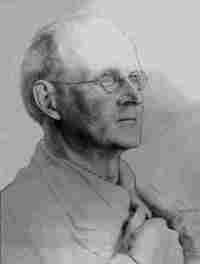
Charles Kay Ogden was an English linguist, philosopher, and writer. Described as a polymath but also an eccentric and outsider, he took part in many ventures related to literature, politics, the arts, and philosophy, having a broad effect particularly as an editor, translator, and activist on behalf of a reformed version of the English language. He is typically defined as a linguistic psychologist, and is now mostly remembered as the inventor and propagator of Basic English.
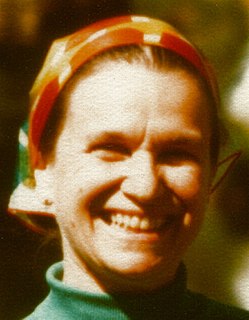
Jean Erdman was an American dancer and choreographer of modern dance as well as an avant-garde theater director.

In narratology and comparative mythology, the hero's journey, or the monomyth, is the common template of stories that involve a hero who goes on an adventure, is victorious in a decisive crisis, and comes home changed or transformed.
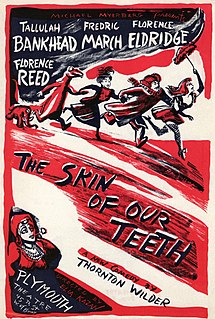
The Skin of Our Teeth is a play by Thornton Wilder that won the Pulitzer Prize for Drama. It opened on October 15, 1942, at the Shubert Theatre in New Haven, Connecticut, before moving to the Plymouth Theatre on Broadway on November 18, 1942. It was produced by Michael Myerberg and directed by Elia Kazan with costumes by Mary Percy Schenck. The play is a three-part allegory about the life of mankind, centering on the Antrobus family of the fictional town of Excelsior, New Jersey. The epic comedy-drama is noted as among the most heterodox of classic American comedies — it broke nearly every established theatrical convention.

Richard David Ellmann, FBA was an American literary critic and biographer of the Irish writers James Joyce, Oscar Wilde, and William Butler Yeats. He won the U.S. National Book Award for Nonfiction for James Joyce (1959), which is one of the most acclaimed literary biographies of the 20th century. Its 1982 revised edition was similarly recognised with the award of the James Tait Black Memorial Prize. Ellmann was a liberal humanist, and his academic work focused on the major modernist writers of the twentieth century.
Henry Morton Robinson was an American novelist, best known for A Skeleton Key to Finnegans Wake written with Joseph Campbell and his 1950 novel The Cardinal, which Time magazine reported was "The year's most popular book, fiction or nonfiction."
Mary Ellen Bute was a pioneer American film animator, producer, and director. She was one of the first female experimental filmmakers, and was the creator of some of the first electronically generated film images. Her specialty was visual music; while working in New York City between 1934 and 1958, Bute made fourteen short abstract musical films. Many of these were seen in regular movie theaters, such as Radio City Music Hall, usually preceding a prestigious film. Several of her abstract films were part of her Seeing Sound series.
Ira Bruce Nadel is an American-Canadian biographer, literary critic and James Joyce scholar, and a distinguished professor at the University of British Columbia. He has written books on the twentieth-century Modernists, especially Ezra Pound and Joyce, biographies of Leonard Cohen and Leon Uris, and on Jewish-American authors. He has won Canadian literary awards, and has edited and written the introduction to a number of scholarly books and period pieces. He is a critic of the Olympic torch relay as a legacy of the Nazis.
A skeleton key is a key that has been filed in such a way as to bypass the security measures placed inside a warded lock.
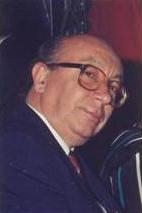
Constantin George Sandulescu was a Joycean scholar, but in the first place, he was a linguist with twelve years' experience in the Department of Theoretical Linguistics of the University of Stockholm in the 1970s and 1980s, specializing in Discourse Analysis. In that capacity he read a dozen or so papers at various international congresses.

Waywords and Meansigns: Recreating Finnegans Wake [in its whole wholume] is an international project setting James Joyce's novel Finnegans Wake to music. Waywords and Meansigns has released two editions of audio, each offering an unabridged musical adaptation of Joyce's book. A third edition, featuring over 100 artists and performing much shorter passages of the book, debuted May 4, 2017.
Bellsybabble is the name of the language of the Devil, mentioned by writer James Joyce in the following postscript to a letter, which he wrote in 1936 to his four-year-old grandson:
The devil mostly speaks a language of his own called Bellsybabble which he makes up himself as he goes along but when he is very angry he can speak quite bad French very well though some who have heard him say that he has a strong Dublin accent.
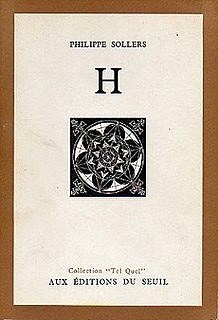
H is a 1973 novel by French novelist Philippe Sollers. The novel was distinguished by its lack of punctuation, similar to Sollers's novels Lois and Paradis. The book was published in English translation in 2015. Critic Roland Champagne describes H as the "culmination" of the "breakdown in traditional writing for Sollers," a period that began with Sollers's novel Lois.

Language in Modern Literature: Innovation and Experiment is a 1979 book by literary scholar Jacob Korg. In the book, Korg examines the role that linguistic experiment played in literary modernism.














